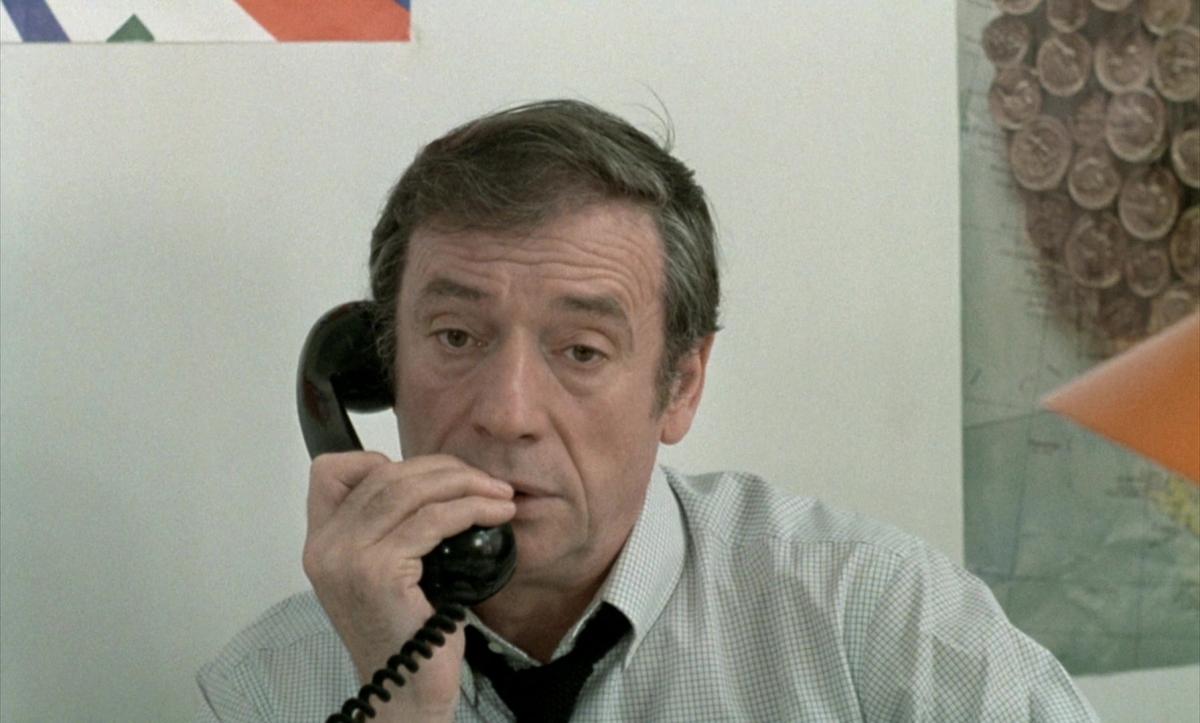Reformulators
On Tout va bien by Jean-Luc Godard and Jean-Pierre Gorin

Godard has always made films for insiders: for his personal friends, for people living in the same city as him (Parisians), for people of his generation, for people of his social class, for people discovering themselves and the world through the veiled melancholy, silly naivety and heroic corruption of the 1950s.
He always consciously played with that variety of audiences he could reach with his films. His way of addressing was particularly precise. And perhaps you could even say that the distribution problems of several of Godard’s films were factored into his projects. His intimate films, his experiments, his emotional outpourings, his confessions used both the resistances and weaknesses of producers and distributors to reach their true addressees.
Since Far from Vietnam and Weekend (both from 1967), I have not felt myself to be one of the addressees of Godard’s experimental period, which brought forth Le gai savoir, A Film Like Any Other (a film made for five people, according to Godard), One Plus One, Wind from the East and Pravda, among other films.
Tout va bien is again a film that is addressed to me as well. Contact has been restored. I wasn’t really expecting that anymore. I feared Godard had collapsed under May ’68, which functioned as a late adolescence and identity crisis for the generation of the 1950s. Tout va bien proves that Godard used all those years well, that he worked and subjected himself to an intense, painful reconstruction. The crisis was the outward manifestation of an intense, passionate, overwhelming work process. The result of this process is not a miraculous transformation. It is still the same Godard, with the same signature, the same intellectual passion, the same feeling for camera, image, sound, actors, space and montage. Godard’s problems (his material) are unchanged too: What is a story? What is cinema? What is an actor? What is background? What is a protagonist?
It may sound paradoxical, but this identity is precisely one of the results of the work process. It is not important to store and process a new load (new material) but to give the old material a new meaning, to shift relations and accents, to reactivate the course. Despite all appearances to the contrary, Godard belongs not to the tradition of innovators but to that of reformulators. In recent months, I have often noticed in our national film criticism how one spontaneously identifies “better” cinema with “new” cinema. One prefers (or takes more seriously) films by Kubrick (Clockwork Orange), Cavani (The Year of the Cannibals), Pereira Dos Santos (How Tasty Was My Little Frenchman), or Elio Petri (The Working Class Goes to Heaven): they talk about new things, about urgent issues, they broaden the field of cinema, they bring the world and its “real” problems into cinema and leisure centres. Against these innovators are the reformulators: people who are not interested in the knowledge of new subjects but in new knowledge of old and familiar subjects. They are people who are not fascinated by what is to come but by what is present everywhere. People who are not fascinated by the new situation but by the renewal of the cliché.
The reformulators include Fritz Lang and Douglas Sirk, Hitchcock and Renoir, Chabrol and an actress such as Marilyn Monroe. The difference between them and Godard is in the tactics of reformulation. Godard does not want to derail, deduplicate or ironise the course like the reformulators mentioned above; he wants to objectify the course.
Classic reformulators stay within the conventional universe, preserving its unity and using that unity as a basis and springboard. Preserving that conventional basis guarantees these films two possible parallel readings: the naive one and the ironic one. This also guarantees a maximum audience for these films at all times. The objectifying, however, breaks the unity of the spectacle. Character and acting, story and narration, the shown and the showing are separated.
I deliberately contrast character with acting and do not use the word “actor”. Because in Tout va bien, Godard does not play the actor Yves Montand against his character. This is a trick of objectification that is used again and again elsewhere but is actually an impasse, an impasse like the entire myth of the realist document, of cinéma vérité. After all, nothing guarantees the authenticity of the actor Montand if he has to “play” the actor Montand. Godard does not set fiction against reality, but against the production of fiction, against the process that carries fiction. Fiction is not a (distorted) image of reality but a human activity. The crucial thing is discovering and mastering that activity.
Godard’s vitality is evident from, among other things, the resolve with which he chose not to shunt the problems of filmmaking into a siding: that of the reconstructed illusion of reality (Francesco Rosi’s The Mattei Affair), that of documentarised fiction (Elio Petri’s The Working Class Goes to Heaven).
Discussions of Godard always give the impression that he makes difficult and troublesome films. Nothing of the sort: Tout va bien is gripping, moving, poignant cinema. You may have to belong to the type of viewer capable of experiencing “intellectual emotions”. You have to be able to grasp the full intensity of abstractly formulated drama. In other words, your aesthetic sensibility has to operate on the level of knowledge as well. And of course Godard presupposes that Marxism is part of your culture.

Images from Tout va bien (Jean-Luc Godard & Jean-Pierre Gorin, 1972)
This text originally appeared in Kunst & Cultuur, nr. 17, 1972.
This translation was published by courtesy of Reinhilde Weyns and Bart Meuleman.
With the support of LUCA School of Arts, LUCA.breakoutproject.

